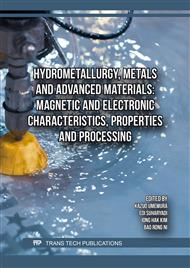p.17
p.25
p.33
p.41
p.53
p.59
p.69
p.77
p.87
Investigation of Crack Propagation Behaviors in Thermal Barrier Coatings after Heat Treatment in Hydrogen Environments by In Situ Three-Point Bending Tests
Abstract:
Crack propagation behavior is a critical factor influencing the service life of thermal barrier coatings (TBCs). With the use of hydrogen as a fuel in a carbon-neutrality context, incomplete combustion of hydrogen gas will introduce potential new failure modes for TBCs. Therefore, it is crucial to evaluate the crack propagation behavior of TBCs subjected to a hydrogen environment. In this study, in-situ three-point bending tests were used to investigate the crack propagation behavior within the top coat after heat treatment under air and hydrogen environments. The results reveal that the sintering degree is reduced after heat treatment in hydrogen environments, accompanied by the formation of numerous microcracks before the displacement reaches 0.6mm. Conversely, heat treatment in air environments results in a higher sintering degree and promotes the propagation of main vertical cracks on the surface of the top coat as the displacement gradually increases to 0.8 mm. Additionally, this study discusses the effect of sintering on the fracture toughness of the top coat and further elucidates the effect of hydrogen fuel on the overall durability of TBCs.
Info:
Periodical:
Pages:
53-58
Citation:
Online since:
June 2025
Price:
Сopyright:
© 2025 Trans Tech Publications Ltd. All Rights Reserved
Share:
Citation:


